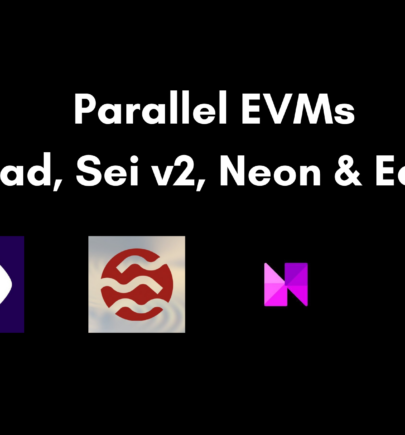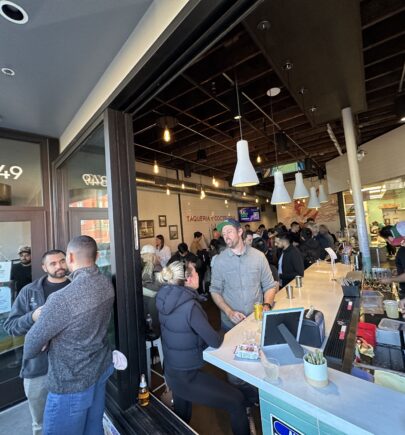An Introduction to Across Protocol (Transfer From L2 To L1 Almost Instantly)

“Across protocol is a novel bridging method that combines an optimistic oracle, bonded relayers, and single-sided liquidity pools to provide decentralized instant transactions from Rollup chains to Ethereum Mainnet”.
Introduction
Ethereum is undoubtedly the bedrock layer of the crypto verse and a pioneer when it comes to contributing towards the growth and development of the DeFi space. Its success demonstrated by its ability to run dApps powered by smart contracts has led to an unprecedented surge in its demand clogging the network and endangering the economic viability of the projects built on it.
Ethereum’s success is also a major deterrent to its growth and scalability. While Ethereum continues to witness growth in terms of users, developers, and other network participants, it also continues to suffer from high transaction fees, slow transaction times, limited processing capacity, and reverted transactions.
There have been different solutions to this problem through side-chains and other Layer 2 Solutions. Layer 2 collectively refers to a set of solutions built on top of the Mainnet (Layer 1) designed to address the aforementioned concerns. They help with scalability issues by handling transactions off of Layer 1, inheriting the robust decentralized security model of Mainnet.
Ethereum has a number of Layer 2 solutions but for the purpose of this article, let’s focus on Rollups.
Rollups
Rolls ups are one of the most promising Layer 2 solutions that execute transactions outside the Mainnet but post the transaction data on it, retaining the security provided by Layer 1.
In simpler terms, the tedious task of processing transactions is offloaded to L2 and then the highly compressed transaction data is posted in batches on the Mainnet. Thereby, enabling L1 to handle way more users, actions as well as data than it could possibly accommodate. So, Rollups provide greater transaction processing capacity, lower gas fees, and faster transaction confirmations whilst retaining Ethereum’s security.
Interestingly, the task of moving the data off-chain for processing is done through smart contracts that bundle up or Rollup the transaction data. Rolls ups enable computation of data off-chain and submission of highly compressed data to the main chain.
To sum up-
- Execution of transactions is outside the main chain.
- Proof of transaction or the data is on the main chain and thereby secure.
- A Rollup or bundled smart contract on the main chain that ensures transaction execution off-chain by using the data on the main chain.
There are two types of Rollups:
- Zero-knowledge Rollups or Zk Rollups
- Generating a validity proof for the whole bundle of transactions by computing off-chain, Zk Rollups through third party operators (sequencers or validators) speed up the validation process on Ethereum by ensuring that the proof submitted to the Mainnet acts as a substitute for all of the transaction data it is associated with. However, a major drawback associated with its use is incompatibility with EVMs (Ethereum Virtual Machine) limiting utility to simple transactions.
- Optimistic Rollups
- In the case of optimistic rolls up, computations aren’t performed by default because they operate with an optimistic assumption of transaction validity i.e, they assume all transactions are valid thereby offering significant improvements in scalability. However, when transaction data is posted back on the main chain, there is a time period wherein anyone can challenge the validity of the data- a mechanism (fraud-proof) to ensure legitimacy and protect against fraudulent transactions. In case of a dispute, the Rollup has to perform the computation to ascertain the validity making transaction confirmations longer on optimistic Rollups compared to Zk Rollups. However, a major plus point is its compatibility with EVMs that widens its use case to full utility of the Ethereum network.
Arbitrum and Optimism are two widely recognized L2 solutions utilizing the optimistic Rollup. Although the two solutions are very similar, they differ with respect to the way they generate fraud-proof.
In the event of a dispute or challenged transaction in the network, Optimism sends the suspicious transaction in its entirety through the EVM, whereas in Arbitrum’s case only the suspicious part within a transaction is sent to the EVM. To put it simply, in case of discrepancy Optimism executes the entire transaction but Arbitrum resorts to a multi-round approach executing small chunks of the transaction until the fraud is detected. This approach enables Arbitrum to achieve a higher transaction capacity in comparison to Optimism.
Optimistic Rollups address a major operational issue associated with Ethereum and contribute to the widespread adoption of Ethereum by decreasing the load on the network. However, transactions are subject to challenge for up to a week. The purpose as stated is to avoid fraud however, this could act as a deterrent for individuals who want an immediate transfer of their assets to the Mainnet.
When data is posted back on to the Mainnet from L2, Ethereum cannot immediately confirm the correct state as it must respect the challenge window period. The resulting delay in confirmations affects withdrawals from L2 to L1. Since these L2 solutions cannot undo the withdrawals once they release the funds, the system prohibits withdrawals unless the validity of the transactions is confirmed.
Across Protocol
What if I told you there was a way to get around the confirmation delays, in fact, I will do you one better and tell you a way to avoid it completely.
What do I mean by this?
Imagine if someone from L1 itself lends you the money you need (for a fee) until the bridged funds arrive. And this translates into an instant transfer.
Across claims to “solve the problem by insuring transactions. Individuals can profit by guaranteeing that the person lending the funds on L1 will actually send the loan. It turns out that this method of cross-chain transfer is actually cheaper than other bridge solutions. It is faster, and we believe, more secure.”
Understanding how Across does this will require an understanding of UMA’s Optimistic Oracle. You can read about it here in my article on UMA or for an in-depth understanding you can click here.

In A Gist
Across leverages UMA’s Optimistic Oracle to deliver on its claim of solving the problem by ensuring transactions. When a user initiates a transfer it sends the money to L2 via the Canonical Bridge on L1. An insurer comes into play on L1 and pays out the transferred amount (less a fee) immediately. A claim is submitted by the insurer to a liquidity pool on L1 with the intent of becoming whole. This claim opens the dispute window, with the prompt of “Did the insurer fulfill her obligations and send the money to the recipient on L1?” So long as she did, the claims window will close after 2 hours and the insurer will be reimbursed.
L2 solutions have considerable potential as they contribute to the resourceful utilization of the Ethereum network. Their only drawback is the associated delay at the time of withdrawals and with Across protocol that is no longer a worry as Across provides a platform for instant and trustless token transfers from L2 to L1 or from Arbitrum to Ethereum.
Stay tuned for my next article where I cover the working of Across Protocol at length.
Socials












